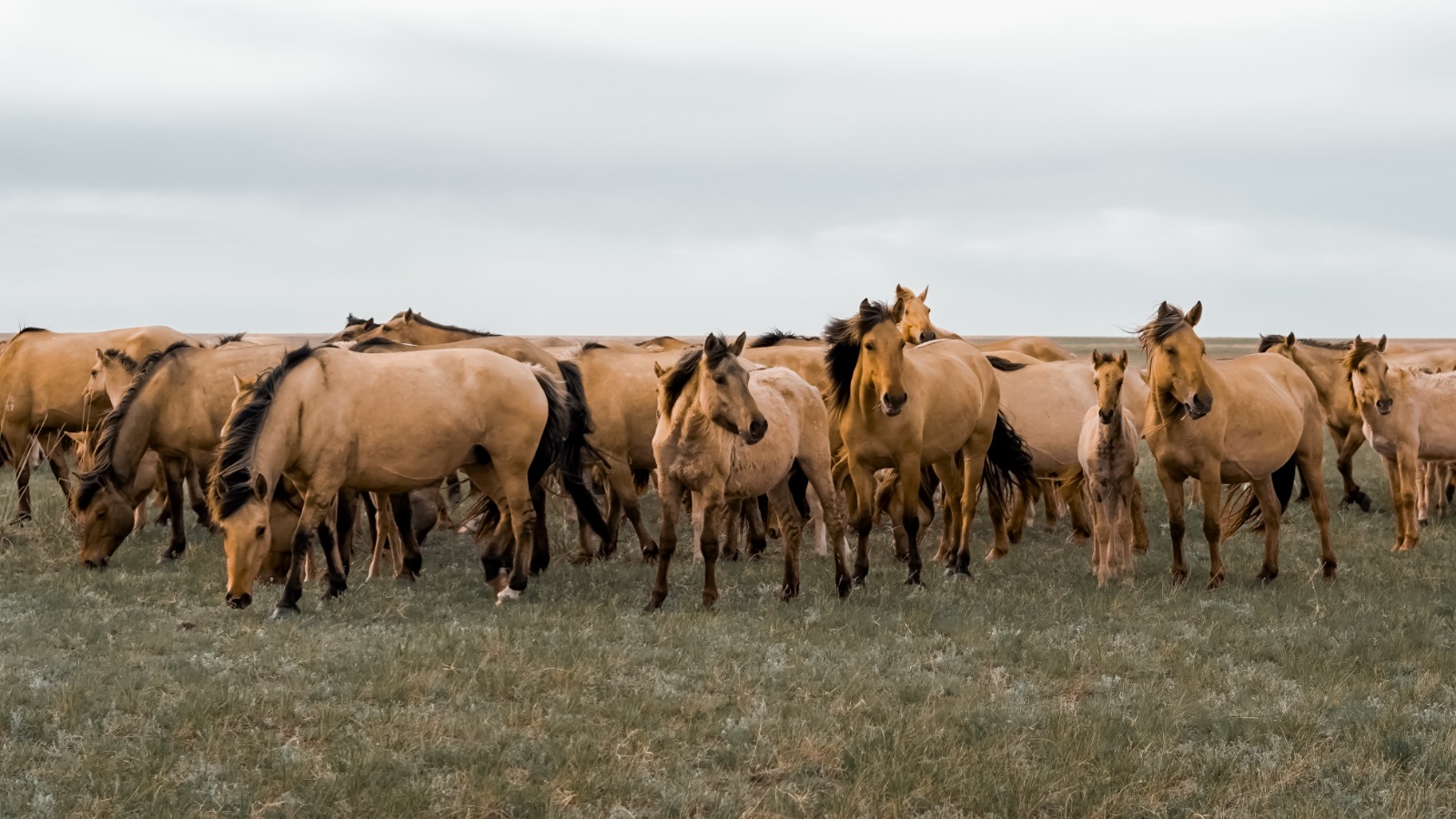On the eve of the 1st International Congress on Horse Breeding, which takes place today, May 5, at Shakarim University, a scientific and production expedition was organized to visit pedigree farms in the Beskaragai district of the Abai region. This region is recognized as a national center for the breeding of unique types of Kazakh and Mugalzhar horse breeds.
The goal of the expedition was to gain direct familiarity with factory-type horses, achievements in selective breeding, animal maintenance, feeding and reproduction conditions, and to exchange experiences with advanced agricultural enterprises that have become the backbone of a new stage in the development of the industry.
The delegation included: Professor Gumingguli Mukhatai (PRC, Tarim University), Professor Sheng Ming Zeng (PRC), Associate Professor Inna Brel-Kiseleva (Kostanay Regional University named after A. Baitursynov), Doctor of Agricultural Sciences Amin Akimbekov (Kazakh Research Institute of Horse Breeding and Forage Production), Professor Kairat Iskhan (Kazakh National Agrarian Research University), Professor Malika Shamekova (Institute of Biology and Plant Biotechnology), and other scientists.
The first destination was the “Ernazar” Agricultural Production Cooperative, specializing in the “Beskaragai” type of the Kazakh horse. This farm breeds resilient and genetically stable horses, perfectly adapted to the steppe and forest-steppe zones of the region.
Professor Kairat Iskhan presented distinguished representatives of this line — horses Shoyynkara, Baitory, Kankuren, and Tobylgyzhiren, highlighting their main characteristics: tall stature, strong build, excellent adaptability, and high fertility.
The head of the cooperative, Khabidulla Mukinov, an Honored Citizen of Beskaragai district and a hereditary horse breeder, shared that he began working in horse breeding in 1993 and has been collaborating with scientists from Shakarim University since 2003. The university’s researchers conduct selective breeding across three areas: horses, cattle, and small ruminants. According to him, the results of this consistent cooperation are now clearly visible. The farm also develops horses for national games and equestrian sports.
In the afternoon, the delegation visited the “Azamat-2” farm, which is focused on the “Irtysh” type of the Mugalzhar breed. Participants studied selection methods, pedigree preservation systems, digital animal registration, and experiences in scientific and breeding programs.
The Irtysh-type Mugalzhar horse is known for its strength, productivity in meat and milk, and exceptional endurance. All of them are uniform in bay color.
After seeing Kazakh horses with their high body mass and ability to graze year-round, international scientists highly praised the achievements of Kazakhstan’s horse-breeding science. Professor Sheng Ming Zeng (Agrarian University of China) emphasized that the development of the “Beskaragai” type was made possible through extensive genetic work and preservation of the gene pool. “As I understand it, Kazakh scientists are already contributing to the breeding and processing of horse products. We could combine efforts in the areas of meat, milk, breeding, and genetics to grow this field into an industry with a great future,” he noted.
Summarizing the trip, Zhannar Kalibekkyzy, Vice-Rector for Science at Shakarim University, stated:
“Farms like Ernazar and Azamat-2 are not just production sites. They are living laboratories of the national genetic code. They clearly show how tradition and science together shape the future. We are committed to supporting them and building a national breeding school based on this foundation.”
This expedition became a practical continuation of the Congress's mission — to form a new strategy for Kazakhstan’s horse breeding industry at the intersection of academic knowledge, real economy, and public policy.

